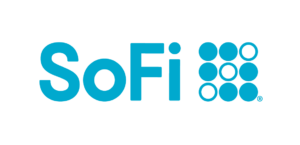No doubt having a bank account makes your life easier. It makes it easy to pay bills, track spending, make deposits, get loans, write checks, have your employer pay you via direct deposit, access ATMs and the list goes on.
But if you think you can’t afford a bank account due to minimum balance requirements and fees, think again. There are a number of places where you can open an account for no cost at all, and in some cases you can even make some extra money.
Table of Contents
Our take
- Many banks offer bonuses for opening a new account
- These can range from $50 up to $2,000
- The interest that banks are paying is rising, so keeping your money in a bank account protects it and will earn you a little bit extra — and every little bit helps
- Many credit unions will let you open an account with a minimum deposit of just $5 to $10
It’s possible to open a bank account for free
Due to the high cost, unbanked or underbanked households often say they don’t have a bank account. A 2019 FDIC study shows that 29% of unbanked American households say they “don’t have enough money to meet minimum balance requirements.”
However, you don’t need much money to open your bank account. Usually opening the account itself is free. But some require you to maintain a minimum account balance, which is where the cost comes in. The minimum amount can be as low as $0 and as high as hundreds of dollars. Some require direct deposit.
Using a bank has a lot of benefits that go beyond deposit accounts. They include debit cards with no ATM fees for easy withdrawals, access to credit cards, mobile banking and check cashing and even billpay services.
Some banks will even pay you to open a new account
Some banks offer promotions for opening a new account. They can range anywhere from $50 up to $2,000, depending on the type of account, whether you set up direct deposit and the balance you can afford to maintain.
For example, Bank of America is offering a $200 bonus for opening a new checking account through May 31, 2024. To be eligible, you must set up and receive qualifying direct deposits totaling $2,000 within 90 days of account opening. (You must use the code TWA200CIS.)
Pro tip: Even a small bonus is free money and that bonus can be a motivator to keep working on building emergency savings.
READ MORE: Here are the six best options for online banking with free accounts
What to look for in a bank account
Look for an interest-bearing account with a low minimum opening deposit requirement, no minimum balance, no monthly fee and overdraft protection. While you may not find one at a local bank branch, there are plenty of options online through Discover, Capital One, Axos Bank, Ally Bank, Chime, Varo and eTrade.
Other features are also important, like free checking, low or no ATM fees, convenience, security, cash back on local purchases and whether the bank integrates with Plaid, which can be important if you want to connect your accounts to a lending app like Dave or other apps that allow you to make instant online purchases.
Pro tip: Accounts through Charles Schwab are free to open by mobile app, have no minimum requirements and include no foreign transaction fees on ATM withdrawals and unlimited ATM-fee rebates. They also include access to a brokerage account and easy setup for various IRAs. You can also access wire transfers. The only disadvantage is the interest rate. Schwab offers a .46% APY when many lenders are now offering 4% or higher.
If you need a money market account or certificate of deposit, you’ll be expected to start with a higher minimum deposit.
Look for an account that pays a high interest rate
There are several options for bank accounts that pay a 4% annual percentage yield (APY) or higher. That’s a particularly good deal, considering the national average interest rate for savings accounts is about 0.42%. Here are a few of the best options:

SoFi Checking and Savings
SoFi offers an online savings account with a 4.60% APY and no account fees if you deposit at least $500 monthly. If you set up direct deposit, you can even make a profit opening the account because, through June 30, SoFi offers a bonus ranging from $50 to $300 for opening a new account with direct deposit.
Some of the account’s other features include:
- Get access to your paycheck two days early
- No-fee overdraft coverage
- Up to 15% back at local businesses
- Up to $2 million of FDIC insurance

Upgrade Premier Savings
Upgrade offers an exceptional 5.07% APY with a new savings account if you make a minimum deposit of $1,000. There is no sign-up bonus, but the higher interest rate will potentially offset that if you expect to leave money in that account over the long term.
- No monthly account fees or transfer fees
- 24/7 mobile access to your account
- Deposits held at Cross River Bank, Member FDIC, insured up to $250,000

PNC Bank High-Yield Savings Account
If you’re looking for an account through a more-traditional bank, PNC offers a 4.65% APY with a $1 minimum deposit.
- No minimum balance requirement
- No fees or service charges
- This offer is only available online in the following states: AK, AR, AZ, CA, CO, CT, HI, ID, IA, KS, LA, ME, MS, MT, NE, NM, NV, NH, ND, OK, OR, RI, SD, TX, UT, VT, WA, WV and WY. The offer is available online and in PNC Solution Centers in MA, MN and TN
- Your money is protected by PNC, Member FDIC
Disclaimer: DebtHammer may be affiliated with some of the lenders mentioned in this article and may earn money when you contact a company through our platform.
What do you need to open a new bank account?
Anyone age 18 or older who is a legal U.S. resident can open a new account. You will also need:
- Your Social Security number or Taxpayer Identification number
- A valid government-issued ID (driver’s license, passport, military ID, etc.)
- Your minimum opening deposit to activate your account — sometimes this can be paid by credit card, debit card or a prepaid card, or transferred from another financial institution.
You may also need:
- Identification details for other applicants if the account is a joint one
- An account co-owner if you’re under the age of 18. You’ll need a parent or legal guardian to sign legal documents.
Consider a local credit union
Credit unions are nonprofit cooperatives that members collectively own. Profits are usually returned to members by lower fees and higher savings rates.
You’ll need to meet specific eligibility requirements to join a credit union. Eligibility requirements can include working for a certain employer and living or worshiping at a particular location. However, there are some online credit unions with open membership.
For example, these credit unions are open to everyone:
- Bethpage Credit Union allows anyone to join as long as they open a savings account with $5.
- Consumers Credit Union allows anyone to join as long as they pay a $5 membership fee and open an online savings account. People who aren’t U.S. citizens are still eligible to open accounts with a Matricula Consular ID or permanent resident card.
- Connexus Credit Union allows new members to join by making a $5 contribution to the Connexus Association.
Pro tip: Check with your local credit unions. If you qualify to join, you can usually find accounts with lower requirements than a traditional bank account.
READ MORE: What happens if you close your bank account and default on a payday loan?
Rule out accounts with extra costs
Rule out any bank accounts that tack on these extra costs:
Minimum deposit requirements
The key is to look for a bank account with a low minimum deposit requirement and no minimum balance to maintain. You don’t want to have to pay a costly fee if you need to dip into your emergency savings to cover a sudden expense.
Monthly service fees
Many banks charge customers a monthly maintenance fee simply for having an account. These can range from $4 to $25 and add up quickly. Even the lowball $4/month fee costs almost $50 a year.
Look for banks that either don’t charge the fee at all or for ways to have the fee waived, including setting up direct deposit.
Overdraft fees
Overdraft fees add up quickly, and many mainstream banks are moving away from them. So many payments are automated these days that even a slight miscalculation in your balance can lead to multiple fees, particularly if you’re borrowing money from payday lenders. If your lender does charge overdraft fees, ask if there’s a way to turn off overdrafts altogether.
READ MORE: Six best bank accounts if you have bad credit
The bottom line
Banking is a necessary evil we need to function in our daily lives. People without a bank account often have to wait in line and pay hefty fees to cash checks at payday lending or check cashing storefronts.
Now there are simple ways to get a free bank account without leaving home. All you need is a few minutes, a computer, tablet, or smartphone and a nominal opening deposit and voila, you’re an account holder.

